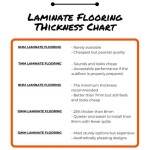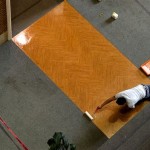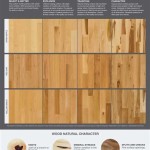Labor Cost to Install Luxury Vinyl Plank Flooring Per Square Foot
Luxury Vinyl Plank (LVP) flooring has surged in popularity as a durable, aesthetically pleasing, and relatively affordable alternative to hardwood, tile, and laminate flooring. Its water resistance, ease of maintenance, and realistic wood or stone visuals make it an attractive option for homeowners and commercial property owners alike. However, understanding the total cost of LVP flooring extends beyond the material cost itself. A significant part of the overall expense is the labor cost associated with professional installation. This article aims to provide a comprehensive overview of the labor cost to install luxury vinyl plank flooring per square foot, exploring the various factors that influence pricing and offering insights into what you can expect to pay for a professional installation.
The labor cost for installing LVP flooring is typically calculated on a per-square-foot basis, allowing for easier estimation and comparison between different contractors. While the average range is often quoted, the exact cost can vary considerably depending on several variables. This article will dissect these variables to provide a more nuanced understanding of the factors influencing the final price.
Factors Influencing Labor Cost Per Square Foot
Several factors can significantly impact the labor cost per square foot for LVP flooring installation. These factors range from the complexity of the installation process to the geographic location of the project and the experience of the installer. Understanding these factors is crucial for budgeting accurately and making informed decisions when hiring a contractor.
1. Subfloor Preparation: The condition of the existing subfloor is arguably the most significant determinant of installation costs. LVP flooring requires a smooth, level, and clean subfloor for proper installation and optimal performance. If the existing subfloor is uneven, damaged, or contaminated, additional preparation work will be necessary. This preparation may involve leveling compounds, patching holes, removing old flooring materials (such as tiles or carpet), and cleaning the surface. Each of these tasks adds to the overall labor time and, consequently, the cost per square foot. For instance, removing old tile flooring, which often involves chipping and grinding, can be a labor-intensive process that significantly increases the installation cost.
The type of subfloor also plays a role. Concrete subfloors may require moisture testing and the application of a moisture barrier if moisture levels are high. Wood subfloors may need repairs to reinforce weak spots or replacement of damaged sections. The more extensive the subfloor preparation required, the higher the labor cost will be.
2. Room Size and Complexity: The size and shape of the room will influence the labor cost. Larger, simpler rooms with minimal obstructions generally require less labor per square foot than smaller, more complex rooms with numerous corners, doorways, and built-in obstacles. Complex layouts necessitate more cuts, precise fitting, and maneuvering, all of which consume more time and require greater skill. Rooms with unusual shapes or architectural features, such as curved walls or built-in cabinets, will also increase the complexity and, therefore, the cost of installation. Additionally, installing LVP flooring in areas with stairs or intricate patterns will significantly elevate labor charges.
3. Type of LVP Flooring: The type of LVP flooring being installed can also affect labor costs. While most LVP flooring is designed for relatively easy installation using a click-lock system, some types are more challenging to work with than others. For example, thicker planks or those with more complex locking mechanisms may require more force or specialized tools to install correctly. Furthermore, glue-down LVP flooring, which requires the application of adhesive to the subfloor, generally involves a higher labor cost compared to click-lock installations. Glue-down installation demands precision and meticulous application to ensure proper adhesion and prevent bubbling or lifting. The selection of the LVP flooring will directly influence the amount of effort and expertise necessary for the project.
4. Geographic Location: Labor rates vary significantly across different geographic locations. Areas with a higher cost of living typically have higher labor rates for all types of construction and home improvement projects, including LVP flooring installation. The demand for skilled installers in a particular area can also influence labor costs. In regions where there is a shortage of qualified installers, prices may be higher due to increased competition for their services. Furthermore, local regulations and permitting requirements can add to the overall project cost, indirectly affecting the labor component.
5. Installer Experience and Credentials: The experience and credentials of the installer will also influence the labor cost. Highly experienced and certified installers typically charge more for their services, but they also offer a higher level of expertise and a greater likelihood of a flawless installation. Hiring a less experienced installer may result in lower initial costs, but it can also increase the risk of installation errors, which could lead to future problems and the need for costly repairs. Licensed and insured contractors offer added protection and peace of mind, as they are accountable for their workmanship and carry insurance to cover any potential damages or liabilities. It is always advisable to obtain multiple quotes from different installers, carefully evaluating their experience, credentials, and customer reviews before making a hiring decision.
6. Removal and Disposal of Old Flooring: The removal and disposal of existing flooring can add to the labor cost, particularly if the old flooring is difficult to remove or requires special disposal methods. Removing carpet, vinyl, or laminate flooring is generally less labor-intensive than removing tile or hardwood, which may require specialized tools and techniques. Disposal fees for old flooring materials can also vary depending on local regulations and landfill charges. Some installers include the cost of removal and disposal in their overall quote, while others charge it as a separate item. It is important to clarify whether removal and disposal are included in the quoted price to avoid any unexpected costs.
7. Additional Services: Beyond the basic installation, additional services may be required, such as the installation of baseboards, quarter-round molding, or transitions between different flooring types. These services can add to the overall labor cost, particularly if they involve intricate cuts or custom work. Baseboards and molding are often necessary to conceal the expansion gap around the perimeter of the room and to provide a finished look. Transitions are used to create a seamless transition between LVP flooring and other types of flooring, such as carpet or tile. The cost of these additional services should be discussed and agreed upon with the installer prior to the start of the project.
Estimating the Labor Cost for LVP Flooring Installation
Estimating the labor cost for LVP flooring installation requires careful consideration of all the factors mentioned above. While it is impossible to provide an exact cost without a site visit and a detailed assessment of the project, the following steps can help you develop a reasonable estimate:
1. Measure the Area: The first step is to accurately measure the area to be covered with LVP flooring. Measure the length and width of each room and multiply these dimensions to calculate the square footage. Add the square footage of all rooms together to determine the total area. It is always advisable to add an extra 5-10% to the total square footage to account for waste and cuts.
2. Assess the Subfloor: Thoroughly inspect the condition of the existing subfloor. Look for any signs of damage, such as cracks, holes, or unevenness. Determine whether any subfloor preparation work will be necessary, such as leveling, patching, or moisture remediation. If you are unsure about the condition of the subfloor, it is best to consult with a flooring professional.
3. Determine the Complexity of the Room: Evaluate the complexity of the room layout. Consider the number of corners, doorways, and built-in obstacles. Determine whether any additional services will be required, such as the installation of baseboards, molding, or transitions. Complex layouts and additional services will increase the labor cost.
4. Obtain Multiple Quotes: Obtain quotes from at least three different flooring installers. Be sure to provide each installer with the same information about the project, including the square footage, subfloor condition, and any additional services that are required. Ask each installer for a detailed breakdown of the labor cost, including the cost of subfloor preparation, installation, and removal of old flooring.
5. Compare Quotes Carefully: Compare the quotes carefully, paying attention to the details of each quote. Do not simply choose the lowest bid. Consider the experience and credentials of the installer, their customer reviews, and the quality of their workmanship. Also, ensure that the quote includes all the necessary services and materials. Ask for clarification on any areas that are unclear or ambiguous.
Typical Cost Ranges and Considerations
While the factors discussed above significantly influence the final cost, understanding the typical cost ranges can provide a general benchmark. The labor cost to install luxury vinyl plank flooring typically ranges from $2 to $7 per square foot, depending on the complexity of the installation and the location of the project. This range is broad, and projects involving extensive subfloor preparation or complex layouts will likely fall on the higher end of the spectrum.
It is crucial to remember that these figures are estimates and that the actual cost may vary. Engaging with qualified flooring contractors for a thorough assessment and a detailed quote is highly recommended to obtain an accurate and reliable estimate for your specific project. Transparency and open communication with your chosen contractor are essential for ensuring a smooth and successful installation process.

Fixr Com Cost To Install Vinyl Flooring

Fixr Com Cost To Install Vinyl Plank Flooring S

Fixr Com Cost To Install Vinyl Flooring

Fixr Com Cost To Install Vinyl Flooring

Fixr Com Cost To Install Vinyl Flooring

Luxury Vinyl Tile And Plank Flooring Installation Costs

The Complete Guide To Flooring Costs By Type Twenty Oak

The Complete Guide To Flooring Costs By Type Twenty Oak

Fixr Com Luxury Vinyl Plank Flooring Installation Cost

Average Cost Of Vinyl Flooring Installation In 2024 Forbes Home








